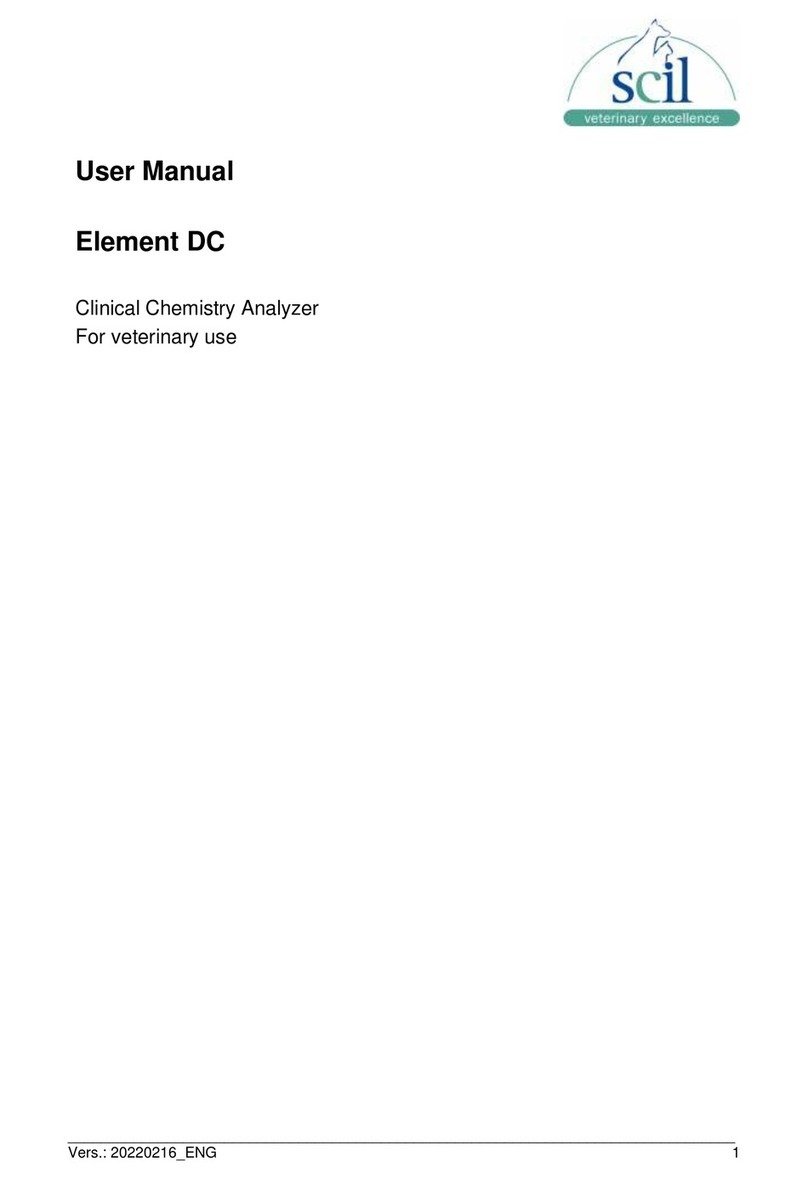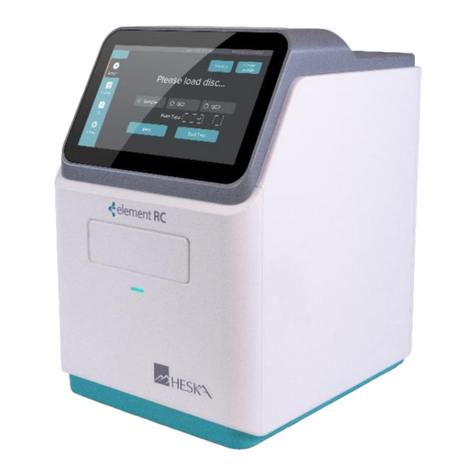Vers.: 20230710ENG
Page 2
Table of content
1 Safety information....................................................................................................... 6
1.1 Labels and symbols on the system.......................................................................... 6
1.2 General safety messages.......................................................................................10
2 Understanding the analyzer...........................................................................................12
2.1 Intended use ..........................................................................................................12
2.2 Blood sample parameters, histograms and scattergrams.......................................12
2.2.1 Parameters...........................................................................................................12
2.2.2 Histograms......................................................................................................13
2.2.3 Scattergrams...................................................................................................13
2.3 Product description.................................................................................................13
2.4 Overview of the software interface .........................................................................17
2.5 Reagents, controls and calibrators.........................................................................18
2.5.1 Reagents.........................................................................................................19
2.5.2 Controls and calibrators ..................................................................................19
3 Understanding the system principles.............................................................................20
3.1 Introduction............................................................................................................20
3.2 WBC measurement by the SF Cube Cell Analysis technology...............................20
3.3 HGB measurement.................................................................................................21
3.3.1 Colorimetric method........................................................................................21
3.3.2 HGB................................................................................................................21
3.4 RBC, PLT and RET measurement .........................................................................21
3.4.1 RBC and PLT: Sheath flow impedance method...............................................21
3.4.2 PLT and RET: SF Cube Cell Analysis technology...........................................22
3.4.3 Derivation of RBC - related parameters...........................................................22
3.4.4 Derivation of PLT - related parameters............................................................23
3.4.5 Derivation of RET –related parameters ..........................................................24
4 Installing the analyzer....................................................................................................24
4.1 Introduction............................................................................................................24
4.2 Installation requirements ........................................................................................24
4.2.1 Space requirements........................................................................................24
4.2.2 Power requirements........................................................................................25
4.2.3 General environment.......................................................................................25
4.2.4 Moving and installing the analyzer...................................................................26
4.3 Connecting the analyzer system.............................................................................26





























